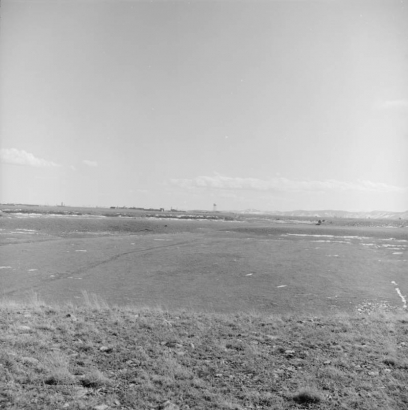At first glance, the picture above could be any prairie land between Wyoming and New Mexico, but it's not. Not even close. This particular patch of prairie once housed the Rocky Flats Plant where Cold Warriors built the plutonium triggers that were used in atomic bombs.
During its 40 years of operation (1952-1992) Rocky Flats generated a whole lot more than atomic bomb parts. Without question it generated controversy, and credible research maintains that it also produced long-term environmental problems for the land and long-term health problems for those who lived nearby. This storyline is skillfully articulated in Kristen Iversen's seminal work, Full Body Burden: Growing Up in the Nuclear Shadow of Rocky Flats,
Even though Rocky Flats hasn't produced a plutonium trigger in more a quarter century, the legacy of the work done there is still very much alive in the hearts and minds of those whose health and well-being was impacted by the plant, as well as on the land itself, which many say is still quite polluted with toxic debris. (Denver Public Schools has banned field trips to the site for the foreseeable future.)
Environmental pollution at Rocky Flats has flared up in the local consciousness quite recently. The site is getting set to re-open as an open space replete with trails and other opportunities to enjoy the land that once figured so prominently in the Cold War. To say that this decision is controversial is something of an understatement.
There is no shortage of local voices who think that Rocky Flats is still too polluted for human habitation and want to see the open space idea shot down completely. There are other voices that suggest this is an over-reaction and that a decades-long clean-up effort has rendered the several thousand year half-life of plutonium null and void for the purposes of recreation.
The controversy and complexities surrounding Rocky Flats' new role as an outdoor recreation hub were recently put on display at the Denver Public Library's Western History and Genealogy Department in a thought-provoking exhibit titled, Facing Rocky Flats. Through a series of sculptures, photos, text and audio, Facing Rocky Flats wades through the controversy surrounding the plant's new life in a manner that's aimed at educating the public on a very complex and controversial subject.
In an interview with CBS 4, exhibit curator Jeff Gipe (who grew up in the shadow of Rocky Flats) explained the exhibit's goal saying, "My main concern with Rocky Flats is that the history has been forgotten and people don’t actually understand what happened at the site.” Gipes's words are especially true given the fact that many newcomers to the area have no idea that the triggers for nearly every atomic bomb in the Cold War arsenal were produced upwind from the then-sleepy suburb of Arvada.
Facing Rocky Flats asks a lot of difficult questions that do not have simple answers. The exhibit's curators leave answering those questions, or merely pondering them, to the visitor. And while Rocky Flats is set to start hosting day hikers later this year, the controversy surrounding this Cold War relic are likely to go on for many years to come.
Facing Rocky Flats is on display at the Denver Public Library's Western History and Genealogy Department through the month of October. Admission is free and viewing is available during regular library hours.


Add new comment